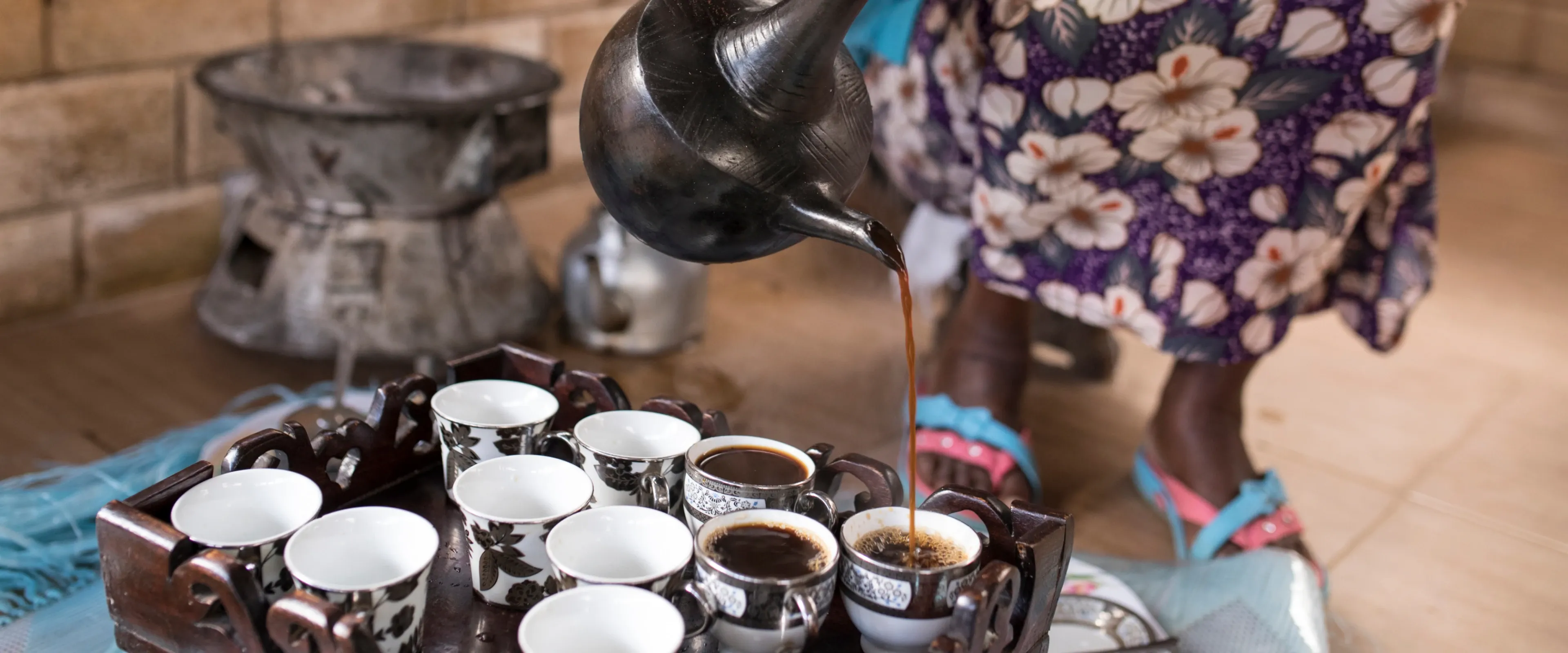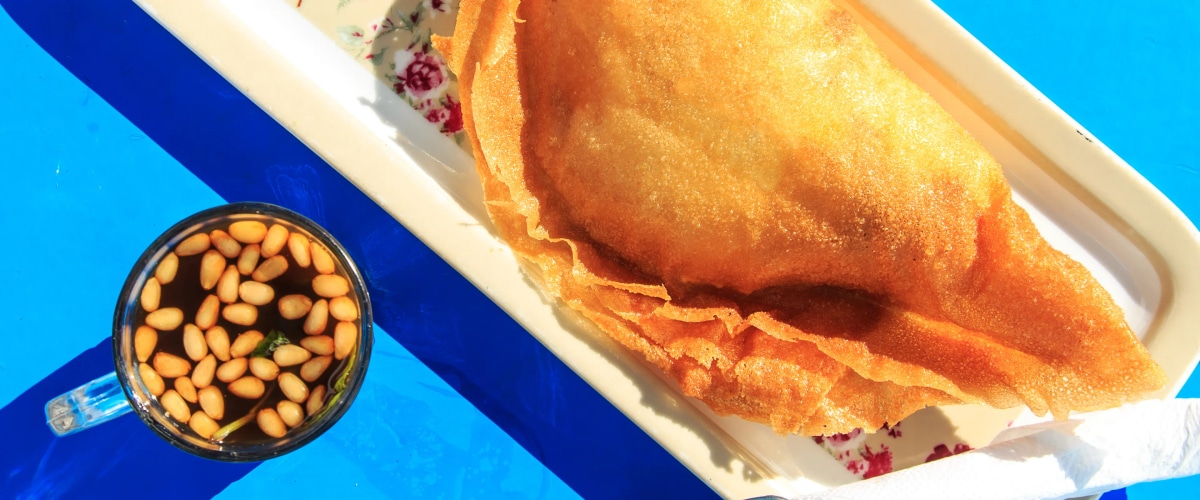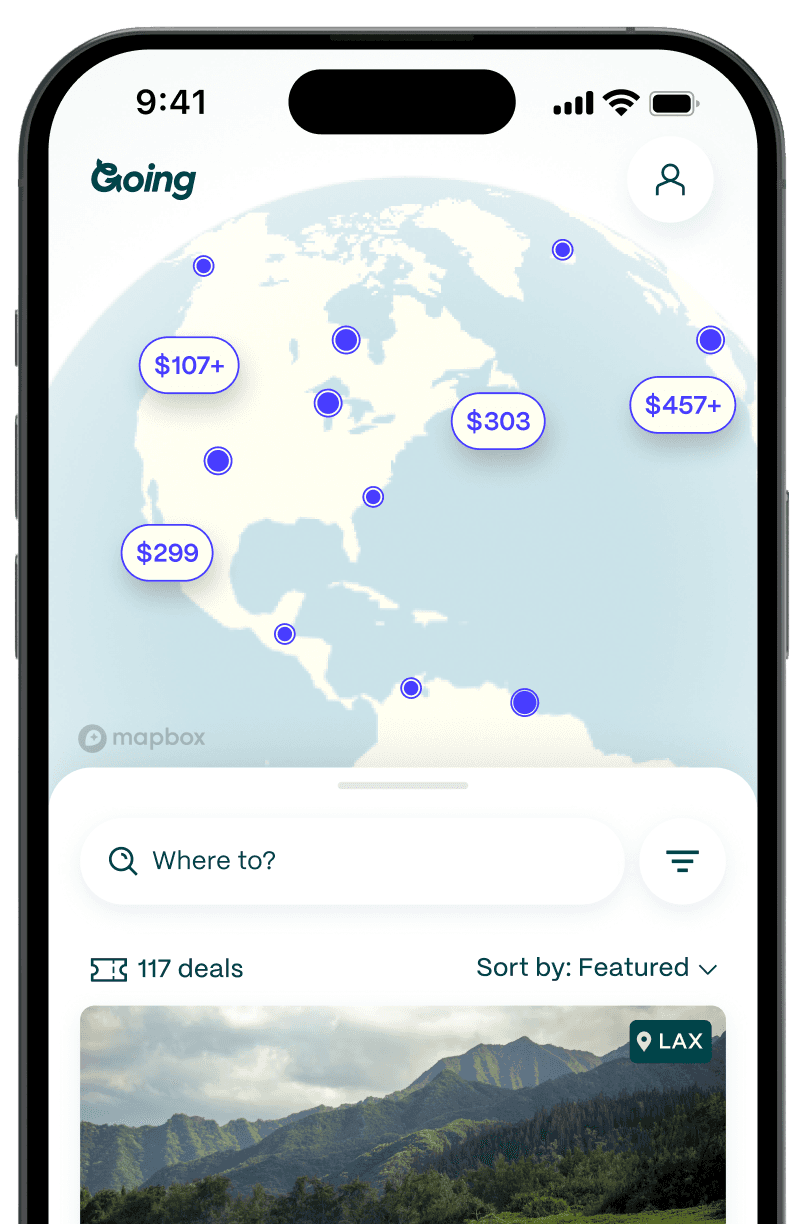
Ethiopian Coffee: A National Drink Served Ceremonially
The rituals around certain foods are prevalent the world over, where the significance lies not solely in the food itself but rather in the ceremonial practices that accompany it.
Take Ethiopian coffee culture, for instance, where a traditional buna (coffee) ceremony is more than just a cup to energize you in the morning—it’s a celebration of the drink that has been woven into the country's social fabric since the 9th century.
Being invited to this ritual is regarded as a gesture of friendship and respect, showcasing the remarkable hospitality that characterizes Ethiopian culture. Luckily, Ethiopians are quick to share this culture with visitors, as residents, hotels, and restaurants regularly organize ceremonies where you can get a taste of buna.
The national drink of Ethiopia is coffee, and it is consumed every day but never alone. “Unlike in cities like New York, London, or LA, where ‘coffee-to-go’ is almost a norm, in Ethiopia, every meeting includes coffee, and coffee always requires company,” says Nardos Street, the owner of Bereka Coffee, an Ethiopian coffee shop and mobile coffee trailer in Akron, Ohio.
Street not only sells Ethiopian coffee, she and her husband also conduct Ethiopian coffee ceremonies in the community. “It is a great way to showcase my heritage and bring forth a deeper understanding of what it means to be Ethiopian,” she says.

Ethiopia—the largest coffee producer in Africa and the fourth-largest worldwide—produces 5 percent of the world’s coffee. The industry also makes up about 5 percent of the country's gross domestic product (GDP) and employs more than 15 million farmers. The country consumes a staggering 40 percent of its crop, a stark contrast to other coffee-growing countries, such as Colombia, which consumes about 18 percent.

The birth of Ethiopian buna
Coffee beans were discovered in Ethiopia’s southwestern province of Kaffa in the 9th century by goat herder Kaldi’s stock as they grazed on the fruit of a coffee plant. Legend has it that the goats were so energized that they couldn’t sleep at night, so Kaldi rushed the mysterious fruit to nearby monks, who promptly tossed it into the fire to destroy the potentially sinful fruit.
However, the roasted fruit exhibited two redeeming qualities: a delectable aroma and, when crushed and steeped in hot water, a drink with an invigorating kick. Coffee.
The brew gave a buzz to the monks' daily devotions, allowing them to continue their prayer long into the night. Slowly, as people migrated from region to region, country to country, the popularity of coffee spread throughout Ethiopia and eventually the world.
“Buna tetu,” which translates to “come drink coffee,” is a famous communal tradition in Ethiopia. Recollecting her own buna experiences growing up, Street says, “Every evening, we would have buna, and my parents would send me to our neighbors’ homes, inviting them to come share coffee. It was our way of socializing after a long, hard day of work and school.”

Buna rituals
The coffee-brewing tradition in Ethiopia has several special elements. It’s usually done by women, either the wife or eldest girl of the house, and they’re dressed in traditional Ethiopian clothes called habesha kemis.
Even before the ceremony, the dining room is cleaned and purified. The coffee cups are arranged on a table along with snacks such as popcorn. Freshly cut grass is placed on both the floor and the table, and sweet incense is burned as a way to carry away evil spirits.
Preparing a cup of buna can take more than an hour. Drinking takes even longer, especially during festivities and celebrations. The ceremony involves various steps to process the raw, unwashed coffee beans into finished cups of brewed coffee.
It begins with washing and roasting the beans on an iron pan called a mitad. Once the coffee beans are roasted, the mitad is taken to the guests so they can smell the beans. They are then coarsely ground in a traditional mortar before putting them into a jebena (a traditional Ethiopian coffee pot made of clay) in which the water has already been set to boil.
Jebenas come in various shapes and sizes and are valuable in every Ethiopian household. Depending on the region where they are made and used, they have one or two pouring spouts.
The hostess knows that the coffee is ready once aromatic foam rises to the neck of the jebena. The jebena is removed from the heat, and the particles are allowed to settle before the cups, gathered on a rekebot (coffee platter), are poured with coffee. “Even pouring the brew is an art, one that I learned from my mother,” says Street. “You have to make sure the grinds stay in the bottom and don’t flow into the cup.”

With each cup that is poured, the strength of the coffee weakens. The first cup, known as abol, is the strongest and purest. Tona, the second cup, is weaker and can be sweetened with sugar. Bereka, the last cup of coffee, is lightest, almost like decaf.
Coffee is typically served with seasonings like sugar, salt, butter, lemon, or rue leaves depending on the region. The jebena is refilled until the settled coffee bits squeeze out their very last taste and guests are finally satisfied.
It is considered impolite to leave the ceremony without consuming at least three cups—Ethiopians believe that your spirit transforms when you complete all three rounds. After the three cups, you are free to take as many more as you’d like; lingering and socializing is encouraged (and expected), especially in a home setting.
A typical buna ceremony can last anywhere from an hour to several hours, especially on weekends and public holidays. At home, it is generally a casual affair, but when a buna is performed at important celebratory events and festivals, guests are encouraged to dress their best. Gifts are not expected, unless the buna is associated with a special occasion, like an engagement or birthday celebration.
It is clear that coffee in Ethiopia is a cultural ritual and serves as a wonderful opportunity to pause, unwind, and connect with friends and neighbors. It goes beyond the simple act of drinking coffee and embodies a deeper tradition of fostering meaningful relationships and shared experiences.
Where to drink buna
While there is something special about being invited to someone’s home for a traditional Ethiopian coffee ceremony, many cafés and restaurants in Ethiopia and the US conduct buna ceremonies as a way for patrons to immerse themselves in the culture. When visiting a café or restaurant, call ahead to book a spot when you want to visit. “Of course, if you are in Ethiopia, find a friend and try to score an invite to a buna at their home,” says Street.
YOD Abyssinia Cultural Restaurant, Addis Ababa, Ethiopia
This restaurant is one of the most popular in the country’s capital city, serving traditional Ethiopian food and coffee. It also has cultural performances that are open to the public.
Dashen Terara, Addis Ababa, Ethiopia
In addition to Ethiopian cuisine, Dashen Terara serves tasty Ethiopian tej (honey wine) and areke (flavored organic liquors). It has live music each evening, and you can end your meal with a traditional buna.
Little Ethiopia Restaurant, Los Angeles, CA
This restaurant satisfies all the cravings for traditional Ethiopian food in a cozy atmosphere. The sambusa, bozena, and lentil soup are customer favorites, and they also perform coffee ceremonies on select days. Call ahead to find out specific dates and times for the buna.
Bereka Coffee, Akron, OH
In Akron, Bereka sells Ethiopian coffee sourced from a local farm in Ethiopia. The husband and wife team also offer VIP Ethiopian dinner gatherings every few months, complete with traditional food and a buna to end the meal.
Last updated December 17, 2024









